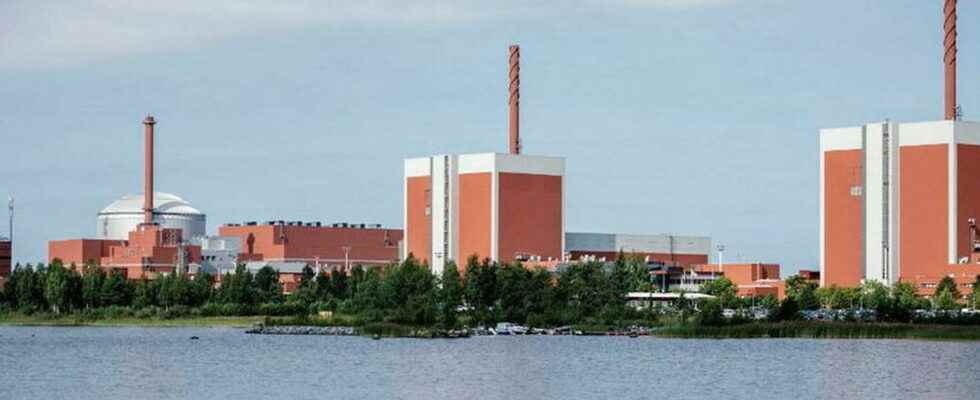Since the end of September, the reactor has been running at maximum capacity. It should definitely enter service in December.
SourceAFP
© ANTTI YRJONEN / NurPhoto / NurPhoto via AFP
Published on
– Modified
Link copied
Copy link
Lhe deafening din of the huge turbine spinning at full power sounds like a relief: twelve years late, the EPR nuclear reactor at Olkiluoto in Finland is coming up to full power just before a very tight energy winter in Europe. Steam from the nearby reactor, heated to nearly 300 degrees, spins the more than 60-meter-long turbine up to 25 times per second, heating the atmosphere inside the building to a temperature worthy of a sauna. finnish for the visitor dressed in protective equipment.
After long months of testing, normal commissioning is scheduled for December, but the concrete and steel cathedral built by the French group Areva on the south-west coast of the country reached full capacity at the end of September. “It took a lot of perseverance and years of hard work to get there, so we feel pretty good right now,” confesses Johanna Aho, a spokeswoman for Finnish nuclear operator TVO.
With 1,600 megawatts, it is now the most powerful reactor in Europe in service, and the third in the world. When ‘OL3’ reached full capacity on 30 September for the first time since its construction was announced in 2003, it alone produced around 20% of the electricity consumed in Finland and even 40% if you add the two existing reactors OL1 and OL2. “That’s a lot of electricity and that’s the stable and predictable level of production that nuclear power provides,” boasts the spokesperson.
READ ALSOFortunes and misfortunes of French nuclear power – And tomorrow?
In Finland, nuclear power is on the rise
Timing is crucial as Finland grapples with the shutdown of electricity deliveries from Russia, an import capacity of around 1,000 MW. A possible new problem would be bad news for the Nordic country, which already had to operate reserve oil-fired power plants last month. Sweden remains a possible source of supply, but the neighbor is itself facing the risk of shortages this winter. At the beginning of October, a dozen full-power tests remained to be carried out on Olkiluoto 3, during which the reactor periodically ceased production for several days, even weeks.
The enormous additional costs of the site started in 2005 were one of the main causes of the industrial dismantling of Areva, weighed down by losses of several billion euros. A structure remains, whose main task is to complete the Olkiluoto site.
Despite this fiasco, support for civilian nuclear power has grown in recent years in Finland, spurred by climate concerns and global energy tensions. According to a poll published in May, 60% of Finns are now in favor of it, a record. Since the cancellation in May of the Hanhikivi 1 nuclear project of the Finnish Fennovoima and the Russian Rosatom, no new nuclear reactor project has however been launched outside of OL3. As early as 2006, delays in the construction of the main cooling pipe had already postponed the start-up of the reactor to 2010-2011.
READ ALSOFinland, the country that wants more nuclear energy
EPR, “puzzle” constructions
The Finnish nuclear safety agency STUK then requested in 2009 several hundred improvements due to “problems related to construction”, opening a conflict between the operator of the future reactor, the Finnish TVO, and Areva-Siemens, with also criticism of the Finnish policeman. After several years of litigation and additional delays, Areva finally settled its dispute with TVO in November 2018, paying compensation of 450 million euros.
Launched in 1992 as the ultimate in French nuclear technology, the European Pressurized Reactor (EPR) was designed to revive nuclear energy in Europe, in the aftermath of the Chernobyl disaster of 1986.
The new model was touted as offering both higher power and better safety, but its construction is proving to be a headache, and not just in Finland. In France, the construction of the Flamanville EPR, which began in 2007, was also affected by massive delays, due in particular to anomalies in the steel cover and the reactor vessel. The EPR has also been selected for a two-reactor power plant at Hinkley Point, in the south-west of England, where the site has suffered from the coronavirus pandemic. Electricity production is currently planned for mid-2027, instead of 2025 initially. In China, two EPRs were launched at the Taishan power plant in the south-east of the country in 2019. One of the reactors, shut down for a year for a sealing problem, resumed production in August.READ ALSONuclear and renewables, the price war
